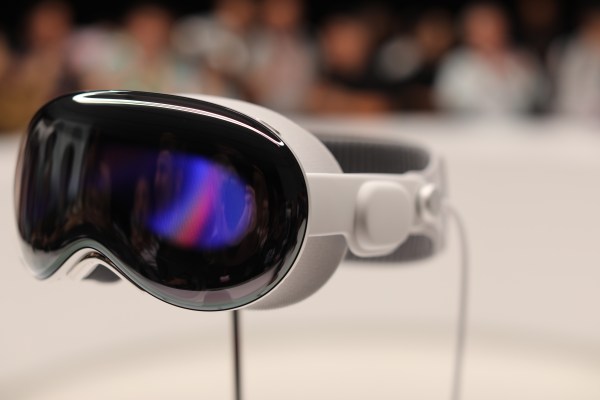It’s not just Netflix, Spotify, and YouTube that don’t have apps for Apple’s Vision Pro at launch. New App Store data indicates the new mixed reality headset and Apple’s foray into virtual reality has so far seen only a tepid response from app developers. As of this weekend, the AR/VR device’s App Store has just 150+ apps that were updated for the Vision Pro explicitly, according to data from market intelligence firm Appfigures — a sliver of the App Store’s 1.8 million apps.
That’s not the number of apps available, to be clear.
The Vision Pro is theoretically compatible with iOS and iPad apps, unless a developer opts out. But it is indicative of how many companies rushed to build for the new platform, specifically — and given the size of Apple’s wider developer base, it’s a smaller number.
There are several reasons why developers may not be customizing their apps or building new ones just for Apple’s latest platform, including a limited supply of Vision Pro headsets for testing and an understanding that the market opportunity for their apps may be small for some time, thanks to the device’s hefty price point of $3,499 and up, depending on storage size. Developers may also be struggling with translating their small, touchscreen-optimized apps to a different sort of computing environment.
Still, one can’t overlook the negative sentiment that Apple has stoked among its developer community after the fallout of Epic Games’ antitrust lawsuit against the tech giant. Though Apple largely won the case, as the court ruled it was not a monopolist, it did require that Apple modify its App Store rules to allow developers to point to other means of purchasing subscriptions and other in-app purchases via their own websites. Apple rather maliciously complied with the ruling, tacking on a number of other caveats and guidelines around who can apply for this “exception” to its App Store rules and how the link is to be implemented within their apps, right down to the language developers can use.
The company also said it would only reduce commissions down to 27% from 30%, making the option a non-starter for many app makers, given that credit card processing fees could be even higher than the 3% discount.
This developer-hostile attitude could have a chilling effect on Apple’s wider developer community — a community that had previously rushed to embrace Apple’s new platforms, despite diminishing returns. The Apple iMessage App Store never fully took off, for example, having faced discoverability challenges due to its placement in the iMessage app drawer. Meanwhile, the watchOS App Store has seen several high-profile departures following its launch, including the removal of top apps from Meta, Slack, Uber, and Twitter.
With Vision Pro, Apple rivals like YouTube, Netflix, and Spotify have chosen not to build for Apple’s latest platform, as the Cupertino tech giant increasingly competes in their same markets with its own video and music streaming services. Meta, which makes its own VR headset, has also unsurprisingly opted not to specifically build native apps for the Vision Pro, Appfigures’ list reveals. (Its apps are also not yet compatible, reports MacStories).
That’s not to say there’s nothing for Vision Pro users to do with their new headset at launch. Apple has said that the Vision Pro will allow users to download and stream content from Disney+, ESPN, MLB, PGA Tour, Max, Discovery+, Amazon Prime Video, Paramount+, Peacock, Pluto TV, Tubi, Fubo, Crunchyroll, Red Bull TV, IMAX, TikTok and MUBI. Apple’s own apps are also available, as others you may know like Temu, Uber/Uber Eats, Tinder, Notion, CNN, Washington Post, Reddit, Discord and more.
Plus, Appfigures reveals a few other big brands and popular apps that have been built for Vision Pro specifically, including Box, Carrot Weather, Webex, Zoom, Fantastical, and others. Many, however, were not household names.
Several more have opted out, meaning they don’t have the “compatible” flag, Appfigures tells us. This includes apps like Facebook, Instagram, Messenger, WhatsApp, TikTok, Spotify, YouTube, Google Drive, Gmail, Google Meet, Chrome, Google Home, Roku, Pandora, DoorDash, Amazon, Candy Crush, Bumble, Nike, Nest, and more. That could change in time.
Apple told developers their existing iPhone and iPad apps would be made available to Vision Pro users automatically unless the developer edits their apps’ availability in App Store Connect. This is possible because the apps for Vision Pro run natively and “use the same frameworks, resources, and runtime environment as they do on iOS and iPadOS,” an Apple support document explains.
Likely, many app developers are just allowing their existing apps to be ported over until the Vision Pro has a big enough user base to warrant the extra attention.
Update, 1/23/24: More apps built specifically for the Vision Pro are starting to launch, though they were not available at the time of writing. Today, the number is up to 196.
